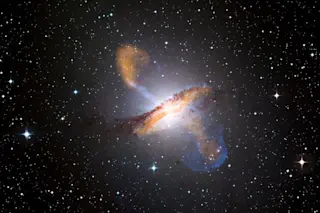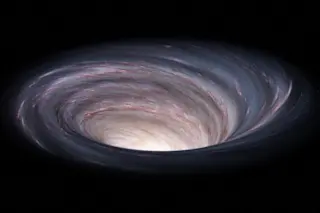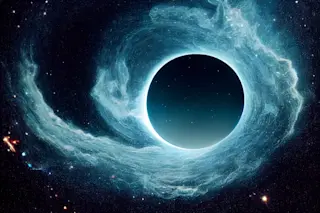Astronomers can sometimes be literal to a fault. We like to call things as we see them. For example, if it’s red and it’s huge: “Red Giant.” White and small: “White Dwarf.” Massive explosion: “Big Bang.” Dark and sucks everything in: “Black Hole.”
Most of the time, classifying objects this way works fine — either it’s new, or it’s something we already know of. But sometimes, as with Pluto, we make new observations that force us to question the name, reassess the object, and identify it differently. You might think this never happens with something as clearly defined as a black hole, but you’d be wrong.
Though we can’t observe them directly, we can see how the two types of black holes — stellar mass and supermassive — affect their surroundings. Stellar mass black holes, the product of a dying star going supernova and collapsing on itself, are the more ...














